#modern LNER! Modern LNER! I know!
Text
Train fact: NAMED TRAINS!
So you've probably heard of the Flying Scotsman. Big green thing, turned 100 this year, probably the most famous locomotive in the UK, if not the world. Adapted into Thomas the Tank Engine with a whole lot of charisma and eyebrows. But did you know that name wasn't hers originally?
'The Flying Scotsman' is actually the name (formerly a nickname) of the train. The locomotive is Flying Scotsman's monster named for it. She was given the name in 1924, to help promote said service at the British Empire exhibition. Any engine, with any rack of coaches, or any train set, can be the Flying Scotsman.
Right now, it's run by LNER's new Azumas, which get a special little outfit about it:
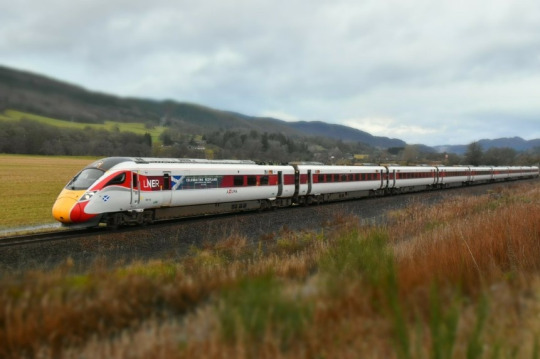
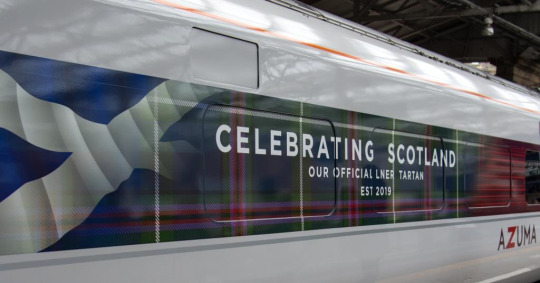
Most of the named trains in the UK were phased out with steam (although you can still catch the Sheffield continental from Sheffield to St. Pancras, or the Northern Lights from King's Cross to Aberdeen, among a handfull of others) but they live on elsewhere.
Some are luxury touring trains, like Japan's Seven Stars in Kyushu (left) or South Africa's Blue Train (right).


Transport isn't really the goal here. They sell out months in advance and cost anywhere from hundreds to thousands of dollars, depending on the class of ticket you get. They're an Experience, and a very cushy experience at that. Just look at their interiors!

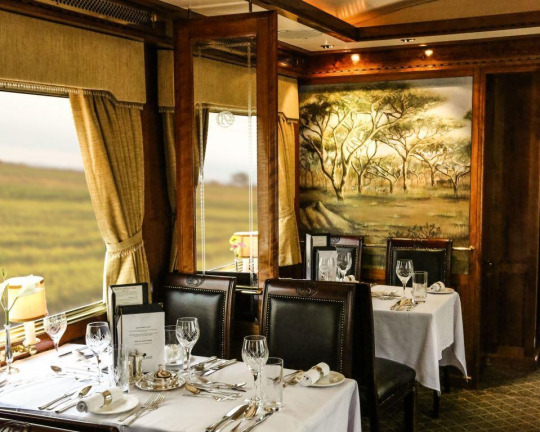
(yes, that's a piano)
But the vast majority of named trains in operation (as far as I can tell) are regularly-running exepress services across Asia.
Japan names their Shinkanens, India, Pakistan, Bengladesh & Sri Lanka often name their intercity expresses. These are practical, long-distance services, often named for monuments, like India's Ajanta Express, named for the Ajanta caves:

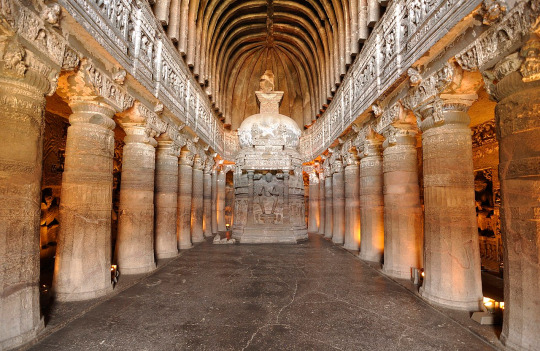
Or their operating regions, like Sri Lanka's උත්තර දේවී | Princess/Queen of the North:

Some North American countries also kept historic named routes, like Amtrak's Sunset Limited, or Canada's Ocean, which has operated continuously since 1904:

but my personal favorite named services are Australia's historically-nicknamed "The Fish", named after one of its drivers:

and the numerous trains that have been companion-nicknamed "The Chips" to match.
#Train facts!#ids in alt text#Sri Lanka Railways#LNER#modern LNER! Modern LNER! I know!#South Central Railway#Indian railways#NSW Train Link#via rail canada#the blue train#seven stars in kyushu#LNER Azuma
168 notes
·
View notes
Text
Traintober 2023: Day 19 - Revolutionary
Where did that Iconic Phrase come from?:
To understand the struggles that the steam and diesel engines faced in the 1950s and 1960s, we must first understand what exactly was meant by Diesel when he said: “We are revolutionary.” It’s a single line that holds a lot of hidden weight, particularly when considering how the diesels came to not only know such a line, but regurgitate it over and over again. It’s a common line from diesels – they claim that they are revolutionary, that they are superior, and that steam engines spoil their image – but why?
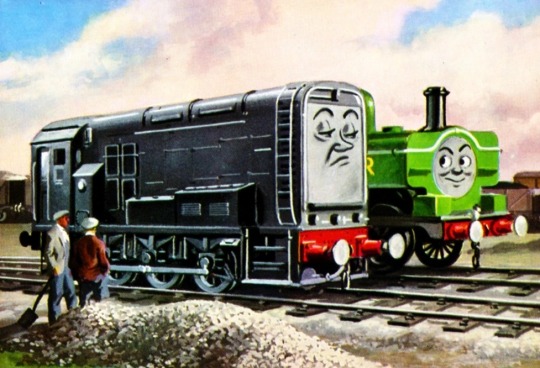
What led the diesels to hold such deep prejudices against steam locomotives, and why is it that they are so adamant about their superiority? Well, I have two theories:
Firstly, that this bravado was designed as propaganda by British Railways to justify their actions in scrapping thousands of steam engines as well as to increase loyalty for the company through diesel locomotives, a plan which utilised the railway rulebook to reinforce their ideology in these diesels’ minds and create a generation of unquestioningly loyal engines to a company that was notably suffering from strikes, low revenue and pre-nationalisation infighting.
Secondly, that this bravado was invented by the diesels to try and cover up their own shortcomings caused by the rushed nature of the Modernisation Plan of 1955, which saw British Railways give up on their original plan to slowly electrify the railway network while keeping steam engines until electric engines could replace them in favour of scrapping all the steam engines and replacing them with diesels.
Let’s break these two different ideas down and I’ll let you all decide which you like more.

Option 1:
British Railways was losing £300,000 a day as early as 1961, and it can be easily surmised that this extremely unprofitable position was not a new one. British Railways was disliked by the extremely antagonistic pre-nationalisation employees or engines – LNER, LMS, GWR and SR locomotives could be often found arguing in stations, further degrading public opinion of the company. Early BR steam locomotives were often sent to bad areas – such as London and Manchester – to try and create unity through a desire to mentor the younger engines. This in part worked, were it not for the scores of pre-nationalisation designs still being produced – especially of GWR designs. This extremely divided workforce left BR with very few options on how to bring unity to the company and restore their public image.
Enter diesels. These were almost completely new to the railways of Britain, with only a few experimental types and shunting classes existing before the 1950s, partially due to the work of Sir Nigel Gresley and his A4 Pacifics, which matching the diesels of the 1930s in terms of speed while hauling significantly more. This meant that they were different to what had existed in the British Isles prior to the war, and their differences would make it harder for steam engines to integrate these new diesel classes into their own cliques. British Railways decided that in order to protect their own image, as well as phase out the ‘more difficult’ steam engines, they would develop a banner for diesels to group themselves under – they found a unifier for diesels: “We are Revolutionary.”

It’s strong branding, for starters. The diesels now have a simple, catchy slogan to rally behind and that gives them a sense of importance that leads them to utilise it against the steam engines (as suggested “gently” by British Rail), leading to the diesels developed a single, united clique which is loyal to their railway company against the ‘old, outdated’ steam engines. It also was given to them by British Railways, furthering the company’s control over their engines and building a strong connection between the image of modern diesels and being a loyal part of the company. In other words, this was propaganda fed to the diesels purely so they would repeat it and create an image on both the railways and in the public’s mind of diesel traction being this great, modern revolution to Britain’s railway network that would change everything.
This, of course, failed badly – but considering that in the 1960s and 1970s Japan, Germany and France all developed high-speed electric trains capable of 200 kph while Britain’s railway closed rail lines, dealt with innumerable failed diesel types and lost its profitable freight traffic to the roads.

Option 2:
This option is perhaps a more interesting one, personally – because this option sees British Railways adopt the slogan after its invention in order to try and recover public face. Instead, the slogan “We are revolutionary” was developed by early diesel locomotives in the 1950s to try and promote themselves as modern and exciting as a way to cover up their own shortcomings – and let’s be clear; these diesels had a lot of shortcomings. The Metrovicks alone had enough mechanical faults to make an engineer run away screaming, while also having windows that fell out at speed. Other diesels caught fire, or belched out thick smoke, or just didn’t work almost all the time. The Pilot Scheme of the 1950s and 1960s was an absolute failure, all things considered – and while there were successful designs which became the backbone of the British Network (the Class 20s, Class 47s and Class 37s are all still in revenue-earning service, sixty years later), most of these classes were a terrible investment. And they knew it.

The public knew it too – the failings of British Railways was major news, both in parliament and in everyday households. The diesels needed a Public Relations victory – and fast. Remember, the Modernisation Plan of 1955 was a modification of the original intention of BR, which was to use steam locomotives until they electrified (a method used across continental Europe) and were diesels to fail any more than they already were, the company could have very easily shelved dieselisation in favour of this potentially safer (and less likely to catch on fire) option.
So, they developed a slogan to recite to the public: “We are Revolutionary”, and they got their most promising diesel classes (the Class 08s, Deltics, Class 40s and other successful designs) to repeat the line as often as possible around the public. The public caught on, and while it did not reverse the fortunes of the company, it did renew BR’s interest in diesel engines.

Either way, the slogan “We are Revolutionary” was developed specifically for diesel engines, and was used as propaganda against steam engines to try and cement the modernity and superiority of diesel traction in the minds of the public.
Back to Master Post
#fanfiction writer#railway series#thomas the tank engine#railways#weirdowithaquill#rws analysis#we are revolutionary#ttte diesel#british railways#british rail#ttte analysis#traintober 2023#traintober
27 notes
·
View notes
Note
Looking through your blog, many of your train posting is northeastern focus, which, absolutely fair, love what's around you, but what are some of you favorite non-local trains, historic or modern? Around the US and/or international
Ah, yeah, I'm in Northern New Jersey, so I tend to do a lot of PRR, NYC, Lackawanna, Jersey Central, Erie, etc. (not to mention the NYC Subway, PATH, NJT, etc.). Grew up going to the Strasburg Rail Road a lot as a kid, so in terms of historical railroading, I was exposed to the Pennsy first, and everything else just got picked up as I continued along.
In terms of the rest of the US, I've inherited a fondness for the Nickel Plate Road's Berkshires from my dad. In 2015 we went to Jim Thorpe because 765 was visiting and normally she's not that far east so we couldn't miss out on it.

It was a real treat, we got to walk right up to her and everything.
I also love the streamlining for the Southern Pacific (the Daylight is just gorgeous), everyone knows the Santa Fe (still haven't made that French toast but I swear I will), and the Southern...the green paint on their locomotives...divine. And of course, nobody has a better logo than the Chessie System! I also need to do a big shout-out to the Milwaukee Road, as well, because those Atlantics are a dream drive for me that I'll never get because they're all scrapped. But those timetables make me drool...
Internationally, most people who follow this blog are aware that I'm a huge fan of Sir Nigel Gresley's work with the LNER and have a particular obsession with the A4 Pacifics. Driving one would be a dream come true. I know they won't let me take Mallard out (she hasn't operated since the 1980s anyway), but there's a few A4s that are in operational status, so...I promise I won't immediately go for the speed record or anything.
In terms of modern stuff, I'm also fond of the E5/H5 Shinkansen trainsets. They're gorgeous and they operate so well at high speeds. Keep an eye out for the ALFA-X, though, it's due to dethrone them as the highest speed regularly running Shinkansen trainset if it goes into revenue service!
That's a brief overview - a verrrry brief one - but I'm always excited to see trains from everywhere, especially historical ones. It's genuinely the longest-lasting passion in my life (it's been there for over 30 years now) and I hope it stays that way forever!
14 notes
·
View notes
Note
Do you ship Molly with anyengine?
I think you should ;)
"Anyengine," I like that :3
Molly, as has been said many times for other reasons, is a complicated engine. I wouldn't necessarily call her aromantic, but she tries to snuff out any potential feelings she has for others out of a lack of confidence. "Why bother?" is her mindset in this regard. Per my headcanon, her self-esteem was blunted in her youth by the constant bullying of her sisters. They resented her as an engine comfortable with the commoners, and thus "common" in their eyes, so how dare a common engine shed with them and also be in reserve for Royal Trains? And that was drilled into her smokebox any time she was within earshot... for years.
Her sense of self-worth has grown by leaps and bounds since arriving on Sodor, and being allowed to blossom individually and separate from her sisters, (who are all now Hella Dead.) Still, her mind always stops abruptly at that invisible set of buffers between her and the idea of a significant other, habitually. There were SOME Sudrians she pondered. She eyed Henry from afar right after her arrival in '38, but then a certain diesel-hydraulic named for a hibernating forest animal came along, and that was that.
Now, if you want to hear some real gossip that'll make you pull a landline onto the bed, twirl the wire, and go "No. Way.," hear this:
Gordon fancied Molly once, but he once again hoisted himself by his own boiler sludge and could never bring himself to approach her after the fact.
Now, our headcanon goes that Molly arrived on Sodor in 1938 as a loan in anticipation of Gordon's upcoming rebuild. She would join him, James and Henry on the Express Rota, learn the ropes, and help cover for him until his return. Molly also came with the added benefit of not minding pulling trucks, and she was chomping at the bit to be transferred anywhere as long as it was away from her sisters. Sir Nigel Gresley hadn't forgotten dear old Gordon, (although his pet ducks ranked far higher,) and while the LNER's Board couldn't be convinced to send another Pacific over, Gresley interviewed all potential transfers personally, and decided Molly, out of dozens of candidates, was the best. No small praise coming from the man who was basically the LNER incarnate.
Her service record was virtually perfect, her discipline log was literally free of entries, and after several calculations, she was the fastest Claud Hamilton based on her accumulated train timings. And she never so much as bumped a teacup saucer all the while. Her sisters were, in a word... f u m i n g. And you know what? Molly smiled back at them, for the first time in one of these situations. She was living her best life in that moment, God friggin bless. It would later turn out to be the last moment she saw any of them, and honestly what a perfect note to end on.
The Fat Director, who had been putting off Gordon's rebuild for five years now, knew that Gordon would in modern terms, go postal if he found a way to convince himself that Molly was here to replace him and not just fill a temporary (temporary!!!) void, so great pains were taken with choreographing it all. But they needn't have. Timid Molly, it turned out, was Most Popular Girl in the Shed from the minute she showed up. The Sudrian engines up to this point had been through nigh twenty years of petty feuds, circular arguments, and enough trauma to warrant a therapist at Crovan's Gate if it were in the budget, so a new face who disliked confrontation as a rule was... everything they could have ever wanted.
*willie rushton voice* Gordon was fyeurrius.
Gordon was by this point worn out and paranoid, and the more worn out he got, the more paranoid he became. Despite everything to the contrary, he was sure the knives were out for him. He was a prototype who broke down increasingly frequently, and this new girl swans in acting humble and instantly being in everyone's good graces. He's humble!!! (He isn't.) The last straw of course was when Molly, accidentally, bested his fastest timing on the express to Barrow, and that was after she had started late. Gordon's Berserk Button was hit, let me tell you.
He was dragged to Crewe believing he'd be scrapped in an enemy territory workshop, cursing Molly's name and frankly making an ass of himself, you could cut through the theatrics with a saw. Like, it was embarrassing. Like, Gordon... dude. This naturally shook Molly to her core, and any new confidence she had just dissipated. The other engines would've written Gordon off then and there if he was around when she experienced this. Molly was their rock, and for a moment, Gordon was almost dispensable.
Then comes the war.
Archivists disagree on why, but for one reason or another, the LNER just... lets the NWR have Molly in the last minute it's still within their power to decide it. If you want my opinion, a dying Sir Nigel who still remembered Molly so fondly decided she should be allowed to stay on Sodor. No records exist, but in all likelihood he got Molly's difficulties with her sisters out of her, and acted on those as well as the praises Hatt sung her in his correspondences during the loan. So Molly becomes a Sudrian engine on paper, and this is later revealed to her in early 1940.
Gordon had by this time come back, and his time being rebuilt coupled with the national mood had sobered him up considerably. There was no time for fighting, that's what the Jerries want us to do, there's a war on, you know! As all the engines came to wear black and be worked to the frames, Gordon made his peace with Molly, who accepted it because again, she hates fighting. If she were a more combative engine, Molly probably would have torched Gordon a second tender for his behavior and wedged his apology in it. Gordon, for his part, was honestly contrite, but his uppity nature, history of rudeness and constant references to the war made this a bit hard to believe. The other engines forgave him in short order too, but not because they wanted to. So, even though Gordon was legitimately sorry for a change, it fell flat some.
The war drags on. Gordon is being put on goods work more and more, because passengers are suddenly second-rate, and all pretenses and class are out the window. Increasingly, he and Molly are double-heading the heaviest and fastest freight trains, like the iron ore and coal bound for the steelworks and shipbuilders in Barrow. These are stressful journeys lacking in light and made under risk of enemy bombardment. But it brought them together, as little as they may have talked.
And Gordon felt differently about Molly, very very different.
She had a knack for picking herself back up in the face of adversity, rising above the fray whenever others fought, something Gordon envies very much this day, she inspired confidence in you when it seemed she had so little, and she was beautiful. For the first time, the only time, Gordon saw a mixed-traffic workhorse covered in soot and grime and drab unlined black paint, and thought she was the most beautiful thing to ever grace two forever parallel silver ribbons of rail diving into a tunnel of night bombers blotting out the bloody moon. (Didn't account for Gordon being a poet, did you?)
The war ends, and there's a new deal for everyone. The welfare state is born, key industries are to be nationalized, Crovan's Gate and by extension the embryonic NW Region become critically powerful as the Attlee Government lets them keep all loaned materiel during the war, at no charge. (Sodor has consistently returned Labour MPs ever since.) The engines are returning to their old colors, and years of neglected maintenance are being seen to.
It's Molly's turn to be repainted. Rather than return to Apple Green and be like her sisters, Molly cuts her own path and chooses a slightly loud but altogether very becoming and gorgeous livery of yellow with red and gold stripes, and white wheel rims. Hatt would've allowed her to choose whatever she wanted, and you'd think this livery was a bit much for him, but no. He was enamored with the color scheme and even mused in his memoirs about making it a new postwar uniform livery. In the same line of course, he admits it would never happen, ("lest a Third World War begin on our railways on the heels of the Second!")
Gordon loved it, although he was incredibly subtle when it came to applauding it. This may have seemed cold, but he was ashamed of his earlier behavior. He had been so rude to Molly, and here she was, reaching new heights of popularity and success without so much as a hiccup. She's Ms. Perfect, and he's soiled his chances of bettering himself in her eyes forever.
It took him years, but Gordon managed to shove it all down... just. He still dreams of it, but he knows in his heart of hearts that they can never be together. Even if Molly truthfully forgave him, on top of her earlier wartime forgiveness made out of necessity and fear of disagreements, he wouldn't believe her. There would be no way, from his point of view, that she could say such and mean it. And why should she? He wouldn't deserve it.
And... Molly becomes the last engine Gordon has romantic feelings for. He's just... done.
Does Gordon ever tell anyone ANY of this? Not a chance. Who knew about it? Nobody KNEW, but Edward had a theory. It's Edward. He knows Gordon like a book. Does Edward ever voice his suspicions, even to Gordon alone and in the strongest confidence? No.
Did Molly know? No. Did she ever wonder? No, not even a little. It's Molly. No one could POSSIBLY go for her, could they? It's unrealistic. So, she'll just stuff that behind her tubeplate and get back to these trucks, that's what she'll do.
And there'll be no more of this nonsense.
#ttte#ttte shipping#ttte molly#ttte gordon#molly x gordon#ttte henry#ttte bear#henry x bear#ttte james#ttte the fat director#ttte: wwii#ttte edward
57 notes
·
View notes
Text
Thomas OCs: Heidi
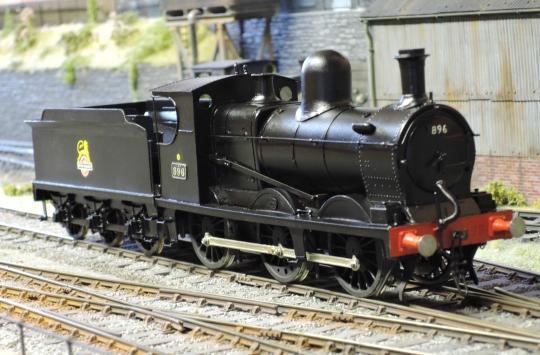
Number: 45 (ex-BR 855)
Class: Cambrian Jones 89 0-6-0
Built: 1919
Arrived on Sodor: 1960 (purchased by NWR in 1959)
Service (Shed): NWR Main Line (Vicarstown)
Livery: NWR Goods Black
Although the NWR has well over a hundred engines on its roster, a great many of them haven’t received any attention in either the books or the television series - usually because of the publishers and producers’ bias towards the adventures of our more famous heroes. For some of these engines, though, this lack of attention is a good thing, and has often been a conscious choice on their part. One or two were even known to tell the Thin Clergyman or his son - chance a few words - to go away, and their wishes for privacy were respected.
Heidi is one such engine, though she was comfortable enough telling us a bit about herself. Now, it’s not that she’s an especially shy or reclusive engine - it’s just that she’s not a particularly outgoing sort either. Rather, Heidi’s a very introverted character, who gets her energy from spending time alone, and is generally happy to remain a background player in her role as a utility engine. That's not to say Heidi will outright eschew the company of other engines, but they know that she’ll speak up when she feels comfortable doing so.
With regards to her history, Heidi is probably one of the railway’s most enigmatic engines, as she prefers to keep her past a secret from all but her closest friends. What is known for certain about her, though, is that she was built and operated by the Cambrian Railways of mid-Wales. With the Cambrian's amalgamation into the GWR, Heidi was gradually superseded by more modern engines, but she managed to survive by virtue of being light enough to work on lines those engines were too heavy to run on.
Eventually, though, the former Cambrian network was upgraded to the point where heavier engines could safely run on it, and this left the 89s out of a job. They were all withdrawn from BR service by the end of 1954, but Heidi escaped the cutter’s torch by being transferred to the departmental stocklist. Thus she survived another five years or so, working as a shunter at Oswestry Works.
In 1959, following the whole Donald & Douglas debacle, Sir Topham Hatt was left with the dilemma of which twin to send back to Scotland, and it’s believed that he was fully prepared to have both twins sent away. However, this would leave him without an engine to handle the extra goods work, and so he started inquiring into the possibility of bringing in another engine to replace the twins. Exactly how he finally arrived at Heidi is unclear - especially since Heidi herself remains schtum about it to this day - but he did, and Oswestry Works kindly agreed to fix her up, before sending her up to Sodor under her own steam.
Heidi arrived on Sodor in early 1960, but by then, of course, Sir Topham Hatt had already managed to resolve the crisis with Donald & Douglas, and decided to keep them both. Heidi was thus somewhat redundant before she’d even started work, but luckily, Sir Topham Hatt decided to let her stay.
Heidi soon carved out a nice little niche for herself, being powerful enough to haul substantial loads, while still being light enough to travel on those parts of the network where the heavier engines can’t go. She’s remained a vital background player ever since, simply getting on with her work in her own quiet, unassuming way.
Trivia
Heidi’s another one of those OCs where I’m not quite sure how she originated. I just remember I went through this phase of creating batches of OCs with the same wheel arrangement - in this case, the 0-6-0. This phase spawned Heather (#47, ex-LNER) and Grace (#40, ex-LMS). So naturally my next 0-6-0 had to be ex-GWR. Specifically from one of the Welsh constituent companies, as I’d liked how Rhonda turned out, and so wanted another Welsh character. As far as I can tell, the 89s were the only 0-6-0 tender engines operated by any of the Welsh companies - or at least the only ones I could find any decent information on.
I’m not sure why I went with Heidi as a name, considering it has no Welsh connection as far as I know. I guess I’d just gone through a list of Welsh girl’s names, not liked any of them, and settled on this one as being good enough. That happens a lot with me, I’ve found...
#thomas the tank engine#the railway series#sodor#island of sodor#north western railway#ttte headcanon#ttte analysis#ttte oc#original character#heidi the cambrian engine
3 notes
·
View notes
Text
Iain Macnab by Herbert B Grimsditch
Below is an essay on Iain Macnab. Someone who is talked about for his and Claude Flight’s Grosvenor School. I didn’t really know a lot about Macnab but the text and illustrations are from The Artist, April 1937.
The old adage that "Those that can, do; those that can’t, teach” is one of those half-truths that are dangerous from their very speciousness. It is a good thing to dissect and expose them once in a while. So far as the fine arts are concerned, one need not look far for examples to prove the frequent falsity of this cruel and facile allegation.
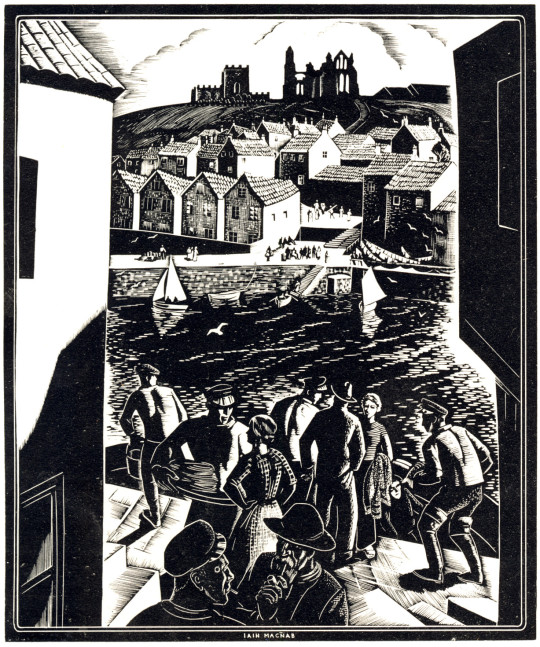
Iain Macnab - LNER Poster
Sickert is one conspicuous case; Tonks (whose recent loss we mourn) is another; and among the younger men one could hardly select a better subject than lain Macnab, who can both ‘do’ and ‘teach’ with talent and finish, and who is an artist teacher because he has the two-fold vocation.
The clarity of his exposition, the whole-hearted enthusiasm with which he descants on art, the breadth and catholicity of his views, mark him out a born teacher; while his own production as a painter and engraver is proof of his capacity as a practising artist.
Macnab is of Highland ancestry, and comes of an ancient and celebrated line of Scottish armourers, the Macnabs of Barachastalain. He has always found his hand respond easily to any new technique, and he is inclined to attribute this manual aptitude to the ingrained hereditary habit produced by an age-long tradition of fine engraved work on pistols and other arms. Also, there were artists on both sides of his family. His father was in the Hong Kong & Shanghai Bank, and Macnab was born on 21st October, 1890, at Iloilo, in the Philippine Islands, which were then under Spanish control. He lisped in Spanish as an infant but at the age of four he was brought home to Kilmalcolm, in Renfrewshire.

Iain Macnab - Fisherman at Portofino, 1937
During a holiday in Ireland at the age of seven a gypsy foretold that he would become an artist. He was educated at Merchiston and left school at eighteen. Already as a boy his interests were turned to sculpture, painting and cartooning, with the first perhaps pre-eminent, but the career chosen for him was that of chartered accountant, and he duly served his artiles thereto in Glasgow for five and a half years. He was due to sit for his final examination in October, 1914; with the prospect if he passed, of an excellent post in the Philippines, leading to the early reversion of a complete business.
But the outbreak of the war formed a pretext for abandoning accountancy, and Macnab enlisted at once as a private in the Highland Light Infantry. Being already trained in the school cadet corps, he found himself in France by the end of October, 1914 and is a Mons Star man. In April, 1915 he was granted a regular commission in the 2nd Argyll and Sutherland Highlanders. During the battle of Loos he was blown up by a shell. After some little time symptoms of grave internal injury became evident; and in July, 1916 he was invalided out of the service.

Iain Macnab - Spring Landscape, Tossa, 1936
His cure was by no means complete, however, and it was not until 1918 that he was well enough to take the art course he had promised himself.
In that year he became a student at Heatherley’s. He had already seen and studied many good paintings; he had an uncle who knew several of the Impressionists, and who used to talk art with him; and in general his mind was well stored with paintings lore. He started work with the determination to be a professional artist or nothing; the amateur status had no attraction for him. His rapid progress, his fertility in ideas, and his clear and ready exposition of them, led Henry Massey, the Principal of the School, to see in him a potentially valuable teacher. So strongly did Massey feel this that after only a year he offered Macnab the post of joint Principal of Heatherley's.
With this offer Macnab closed, and as a teacher worked with enthusiasm at the School till temporarily put out of action again, in 1925, by a too-vigorous pull at the etching press. While convalescent in a nursing home he decided that the time had come when he needed, for the proper expression of his educational theories, a school under his sole personal control; so, once well again he found a big house in Warwick Square, Belgravia, and on 19th October, 1925 opened there the Grosvenor School of Modern Art.
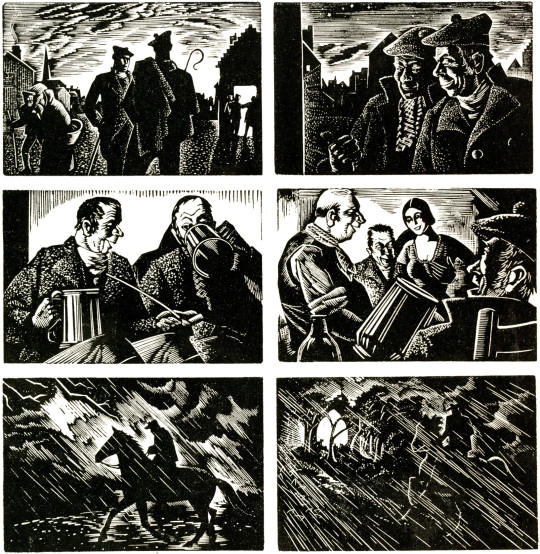
Iain Macnab - Illustrations for Burns’s Tam o’Shanter, 1934
Macnab had thought out the broad principles on which he wished to run his school. His idea was not so much to train students to paint what they saw, in the crude sense, as to teach them to isolate from nature the elements that are truly pictorial, and then to develop their own personalities. His ambition was to make artists.
To be an artist, as distinguished from a mere competent draughtsman, he felt, it is necessary first to have a personality to express. It is indispensable to the production of a work of art that an emotional reaction shall take place. Of that reaction the drawing is only a vehicle. He stresses the cardinal importance of composition; the students are encouraged to approach every problem in terms of design from the beginning, and to build up their drawings gradually on logical principles.
The preliminary visualisation of a subject in planes and its resolution by successive steps into a picture giving the illusion of three-dimensional form are clearly expounded in his recent book on ‘Figure Drawing.’ He is a firm believer in the virtues of wood-engraving as a discipline for all artists, since in this medium every mark must have its significance, and the whole thing must be thought out thoroughly in advance, for there is no scope for fumbling or retouching.

Iain Macnab - Figure Drawing, 1936
Macnab considers himself lucky to have attracted, from the first, a serious-minded type of student, took kindly to his inexorable rule of silence while at work in the studio. This rule shows his common sense, and is by no means the mark of the martinet. No one, indeed, could be less like the more starched kind of pedagogue than Macnab; and when the time comes for exposition and discussion he not only admits but encourages the criticisms of students.
He believes in the thorough ventilation of the subject, and strives to train his pupils to see the inwardness of widely-differing styles. Side by side with his teaching activities Macnab has pursued a versatile course as an artist. He began painting in 1918, and has developed, both in oils and water-colours, a distinctive style that, while it has nothing outré about it, is thoroughly in the modern trend of design.
In October, 1922 he decided that he would like to etch. He was told of five-year courses and suchlike, but this did not suit him, so he bought copper, tools, acid and a book on etching, and within three months had produced six prints which were good enough to secure his election as an Associate of the Royal Society of Painter-Etchers. For some years he exhibited etchings at the Academy, but in 1929 he decided that the copper was altogether too facile and deserted it for wood engraving.

Iain Macnab - Illustration from Burns’s Tam o’Shanter, 1934
This medium he took up largely because of its recalcitrance, because of the stern discipline it imposes. In it he has done some of his finest work; and one might go a long way before finding wood-engravings to equal the ‘Tam of Shanter’ illustrations here Shown, with their beautiful distribution of blacks and whites and their admirable translation of the famous story into graphic terms.
Macnab is a member of the Royal Institute of Oil Painters, Honorary Treasurer of the National Society, and was made a full R.E. in 1935. He has held only one one-man Show, at the old Albany Gallery, Sackville Street. He exhibits each year at the Royal Scottish Academy, and frequently at the London Group, the Royal Institute of Oil Painters, the New English Art Club and the National Society. He has achieved much, and much more may be expected from him in the future.
3 notes
·
View notes
Note
📂
More Scotsmannnnn
[I just want it pointed out that YOU ASKED FOR THIS]
As I stated in an earlier headcanon post, many steam engines were liberated from the United Kingdom whether they wanted to be or not. While many of these locomotives would end up in mainland Europe, a significant number also ended up in the United States. In the 1960s.
Now, this is very important to note for a few reasons:
The horrors of the BR modernization plan was just beginning to trickle across the pond, which meant that attempts were made by American engines to make the brits feel welcome
BR locomotives were never really treated as people, so their knowledge of how the world worked was limited - their own feelings and emotions were often a mystery to them
It was the late 60s and early 70s in America - the free love movement was in full swing
American locomotives had figured out how to get their rocks off in the 1860s, and knew exactly what they were doing
To an American, British accents are sexy
So, to put it out in the open, the former BR stock was introduced to full personhood relatively quickly, and had their cherries popped even quicker.
Flying Scotsman, Noted Man Slut
Alan Pegler knew absolutely none of this when he proposed a continent-wide tour of the US and Canada in 1969-1972. He also didn’t know that US and Canadian minimum wage laws applied to locomotives, and had done so since the introduction of the minimum wage in 1933.
Having to pay Scotsman a fair wage was not in the plan or the cards, and that and other financial difficulties stemming from low ticket sales (because there were English locos in the US already - Scotty boy wasn’t that special) meant that the tour bankrupted Pegler by 1971.
Not that Scotsman cared.
He’d rolled off of the boat in New York and was immediately met by some of the largest locomotives he’d ever seen in his life.

This is from the Canadian leg of the tour, but the difference is about the same.
Scotty boy soon learned to feel a whole lot of things that he hadn’t felt before.
The Americans thought he was cute, and enjoyed his company a lot.
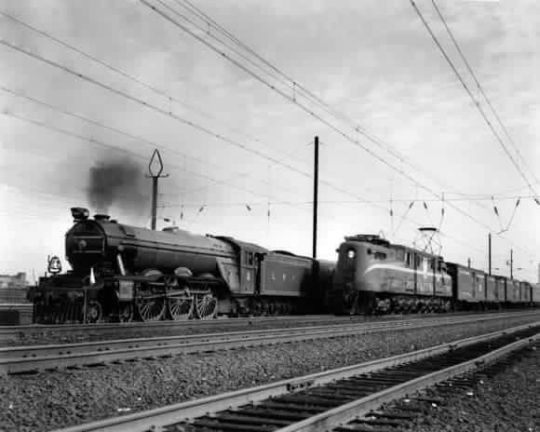
Did you know that Scotsman liked electrics? He sure didn’t - until he met the GG1s.
And this was all while he was still in New York. His first tour stop was in Roanoke, Virginia - the heart of coal country.
Do you know who lives in and near that area?
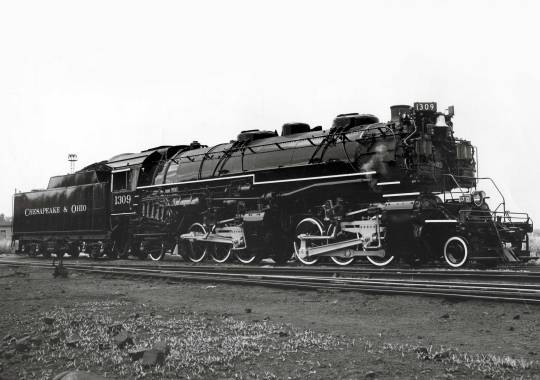


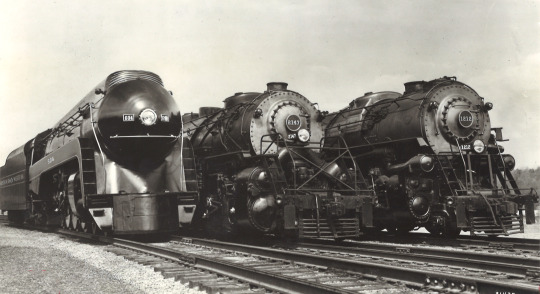
As it turns out, Scotty boy has a type - it might not be his only type, but it’s a type nonetheless!
---------------------------------
Speaking of types...
The British locomotives in the USA (example seen below) had quite a few emotions regarding Flying Scotsman.


To the former LNER engines, he was basically a god amongst engines - he was The Engine, named after The Named Train. He hit 100 before anyone else - and unlike Mallard, he wasn’t a complete tool.
Engines from other railroads were impressed by his speed, by his lines, and by his charming personality - he was polite and gregarious without being arrogant.
Everyone liked Scotsman.
And now they knew what sexual and romantic attraction felt like.
There was a variety of different sexual orientations amongst the British Locomotive Diaspora, but they were all gay (or straight) for Scotsman.
-------------
Alan Pegler went home penniless and in disgrace, and Scotsman slept his way across the United States and Canada three times between 1969 and 1974.
When the Save our Scotsman program raised enough money to bring him back to England, Scotsman almost said no - he was enjoying himself too much!
But... he was THE face of UK rail preservation - without him, there would be a lot less money to go around, at a time when it was most needed (historical societies and heritage lines were beginning to raid places like Barry scrapyard in earnest, and they needed the money), so Scotsman reluctantly loaded himself back onto a boat and went home to the UK, where he succeeded in raising a shitload of money for heritage railways.
---
This isn’t to say that Scotsman never went out again, though - his 1988-90 Australian tour was just as wild as his US tour, and when the ‘great gathering’ of the A4s took place in 2013, he helped the ‘repatriated’ US A4s paint the Great Hall of the NRM red - but that’s another story for another time.
29 notes
·
View notes
Text
Thomas OCs: Roy

Number: 45 (ex-BR 62470)
Class: NBR Holmes K Class 4-4-0
Built: 1913
Arrived on Sodor: 1960
Service (Shed): NWR Main Line (Vicarstown)
Livery: NWR Local Passenger Green
Glen Roy (or simply Roy, as he prefers to be known) is an eternally dour, miserable old sod. He's never happy unless he's moaning about something or someone, and he almost never has a smile on his face (though if engine testimonies are to be believed, his smile is the stuff nightmares are made of). Any engine could also tell you that Roy hates his work, and that he’ll stop at nothing to make things as difficult as possible for any poor soul who has to work with him. Roy also holds a serious contempt for higher management, and often threatens to give 'the flat end of my tongue' to anyone who causes him trouble - only to suddenly suck up to that person or engine should they come along!
It seems that Roy’s always been such a misery, right from the beginning of his career on the NBR in 1913. In his early days, he earned his keep hauling expresses on the NBR’s main line between Edinburgh and Glasgow. Following the First World War, however, he was superseded on this work by larger, more powerful engines. Roy was subsequently displaced to the West Highland line, where his class had proven to be more adept at handling that route’s awkward curves and steep gradients than their modern counterparts.
Later on, however, engines were introduced which had the route availability of the D34s, but were able to haul much heavier trains. Thus, shortly into his BR days, Roy was transferred from Fort William to Eastfield, in Glasgow, where he was kept busy on a mix of light suburban passenger and slow goods trains. The engines in this city had always had an attitude all their own, and it’s perhaps this which has lead to Roy’s present moody temperament.
Roy was finally withdrawn from BR service in 1959, by which time he’d been realloacted to Perth South shed. That was where he languished for the next few months, until he was unexpectedly snapped up by the NWR in 1960. By this time, Sir Topham Hatt had become aware of the growing threat of modernization, and so had embarked on a bulk-purchasing scheme to buy as many steam engines as he could while he still had the chance. Roy was one of the first engines to be purchased under this scheme, and he entered NWR service in the spring of 1960.
Roy did not get on well with the other engines at all. In fact, he still doesn’t. Though he’ll put up with their company for the sake of his work, he doesn’t think of any of them as his friends. In fact, the only engine he has any time for at all is fellow NBR expat Heather (NWR #47), although even then, it’s probably only due to their shared heritage.

Roy’s only other friend, if you could call him that, is his brake van, known as Sunny Jim. You could be forgiven for thinking that with a name like that, Jim is just the sort of positive influence Roy needs. But no - Jim is anything but sunny. If anything, he’s almost as dour and miserable as Roy, if not more so. Needless to say, they tend to bring out the worst in each other. On the other hand, their shared pessimism means they at least know where the other’s coming from, which is probably how their friendship has lasted so long. That’s my theory, anyway...
Trivia
I don’t actually have a lot to say about how Roy came about. I simply wanted an ex-LNER 4-4-0 as one of my OCs, and the D34 seemed like the most interesting choice to me. I chose Glen Roy purely because that could be shortened to something that could easily be used in conversation.
His personality is drawn mainly from the late Stephen Lewis, whose entire acting career was built on playing similarly miserable characters. He’s best known for playing Blakey in On The Buses, but I mainly know him as Harry the signalman in Oh Doctor Beeching.
Roy’s brake van, the ironically-named Sunny Jim, was created around the same time, but they originally had no connection with each other besides the shared personality. I then realized that putting them together would help uncover something interesting about Roy’s character - if only because it gave him someone to direct his perpetual foul mood towards.
#thomas the tank engine#the railway series#sodor#island of sodor#north western railway#ttte headcanon#ttte analysis#ttte oc#original character#roy the scottish engine
6 notes
·
View notes